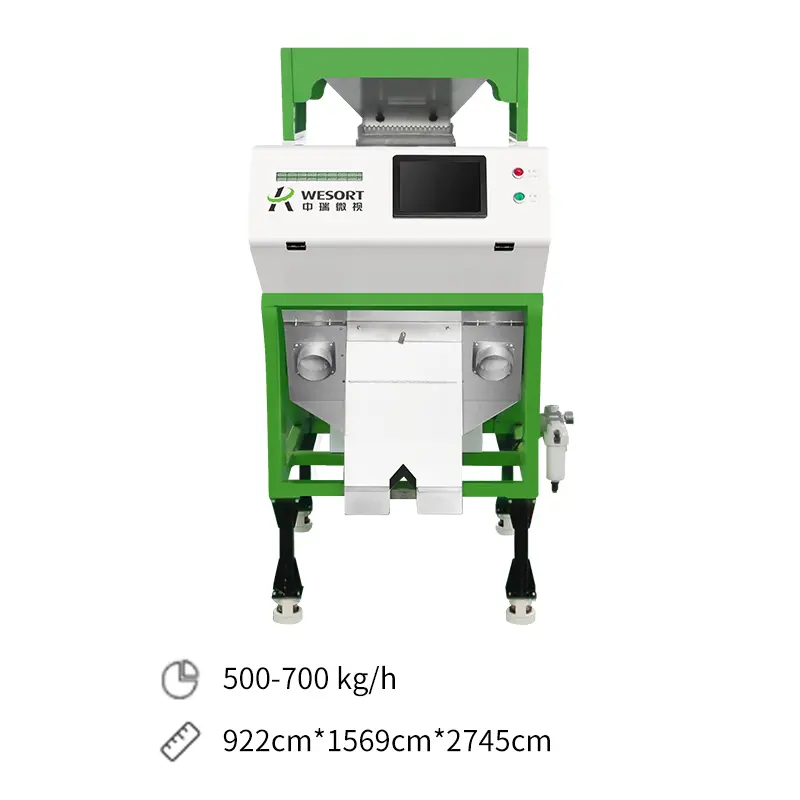Coffee beans go through a complex journey before reaching the cup—from harvest, through processing, drying, and finally sorting. Each step affects the final taste, aroma, and consistency of the coffee. Among them, coffee sorting is a crucial stage, directly impacting product quality and market value. But what many don’t realize is that different coffee processing methods place very different demands on coffee bean sorting machines.
In this article, we explore how natural, washed, and honey-processed coffee influence the performance expectations of a coffee bean color sorter, and how advanced technology can meet these challenges.
1. Natural Processed Coffee: The Tough Test for Color Sorting
In the natural (dry) process, whole cherries are dried under the sun before being hulled. This traditional method often leads to beans with inconsistent moisture levels and external defects such as:
- Uneven fermentation
- Mold spots
- Overripe or underripe beans
As a result, coffee bean sorting machines must be able to detect subtle color differences, especially those caused by fermentation or decay. A powerful coffee color sorter is essential here—it needs high-resolution cameras and AI-based recognition to identify even slight discoloration or shriveled beans.

2. Washed Processed Coffee: Precision in Clean Uniformity
Washed (wet) coffee goes through a fermentation process to remove mucilage before drying. This often results in higher clarity in flavor and more uniform-looking beans. However, defects like insect-damaged beans, black beans, or immature beans still occur.
In this scenario, coffee sorts need to focus on fine detection:
- Identifying black spots, even on light-toned beans
- Detecting undeveloped or pale beans
- Ensuring high throughput without damaging beans
A coffee bean sorting machine used here must balance precision and efficiency. Since the beans look more uniform, only advanced optical sensors can differentiate quality grades.
3. Honey Processed Coffee: Sticky Challenges
The honey process—a hybrid between natural and washed methods—leaves some mucilage on the beans during drying. This results in sticky, dense beans that are prone to clumping or developing uneven surfaces.
Challenges for coffee sorters include:
- Sticky beans causing chute blockages
- Beans with yellow or red hue confusion
- Surface irregularities that confuse traditional sensors
A coffee bean sorter must be engineered to prevent clogging and use smart sorting algorithms to correctly classify semi-processed beans.
4. Why Choosing the Right Coffee Sorting Machine Matters
Choosing the right coffee sorting machine is not just about removing defects—it’s about preserving flavor integrity, improving processing efficiency, and meeting global quality standards.
Key factors to consider:
- Sorting accuracy (especially for small defects like insect holes or discolored beans)
- Adaptability to different bean types and processing methods
- Gentle handling to avoid breaking or damaging beans
- Output speed and long-term reliability
A good coffee sorter can mean the difference between a premium export product and a rejected shipment.
5. Why WESORT Is the Preferred Coffee Bean Sorter Brand
When it comes to smart coffee sorting solutions, WESORT is a trusted global name. Here’s why more coffee processors are switching to WESORT:
✅ AI Vision Technology: WESORT’s coffee bean color sorter uses AI algorithms to detect defects with industry-leading precision, including micro-cracks, insect damage, and color inconsistencies.
✅ Adaptability: Whether you’re sorting natural, washed, or honey-processed beans, WESORT machines can easily switch sorting modes with just a few adjustments.
✅ Conveyor Design: Unlike traditional chute sorters, WESORT uses conveyor belt coffee sorters to ensure gentle handling and prevent bean breakage.
✅ High Throughput with Low Waste: Designed for industrial efficiency, WESORT’s coffee sorting machine delivers high sorting accuracy while reducing the reject rate.
✅ Global Support: With a growing presence in Asia, Europe, and Latin America, WESORT provides responsive support and customized sorting solutions.
Conclusion
Coffee processing methods are as diverse as coffee flavors themselves. Whether using natural, washed, or honey processing, choosing the right coffee bean sorter can make all the difference in quality and profitability.
With cutting-edge AI sorting capabilities, high adaptability, and proven field performance, WESORT’s coffee sorting machines are ready to meet the challenges of any processing method.
👉 Learn more at: www.wesortcolorsorter.com

